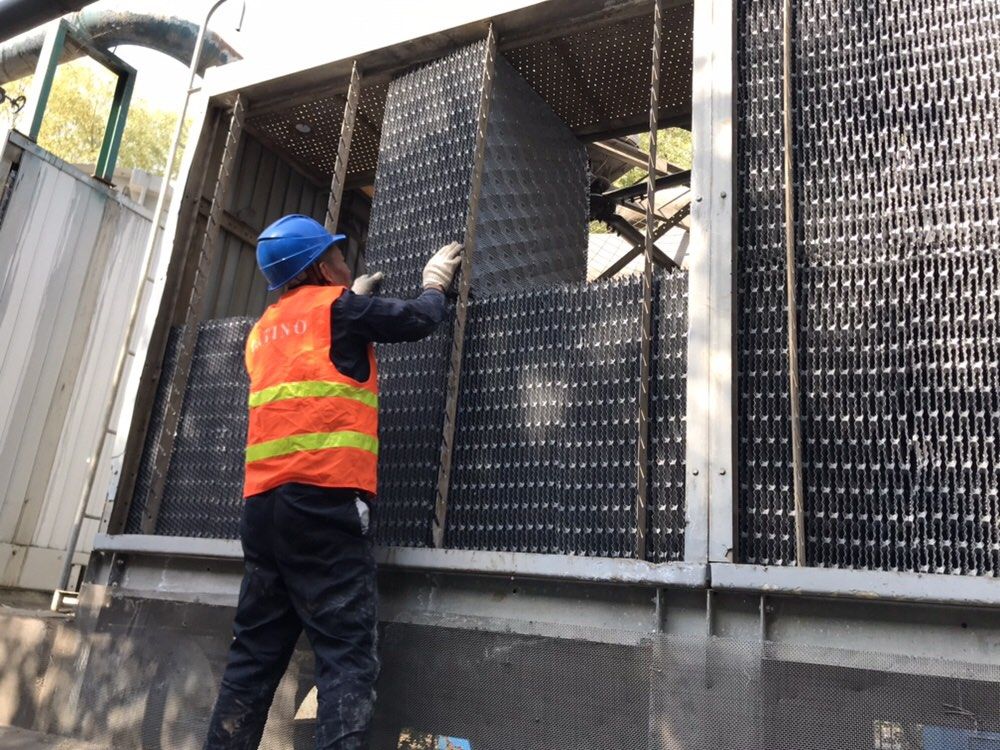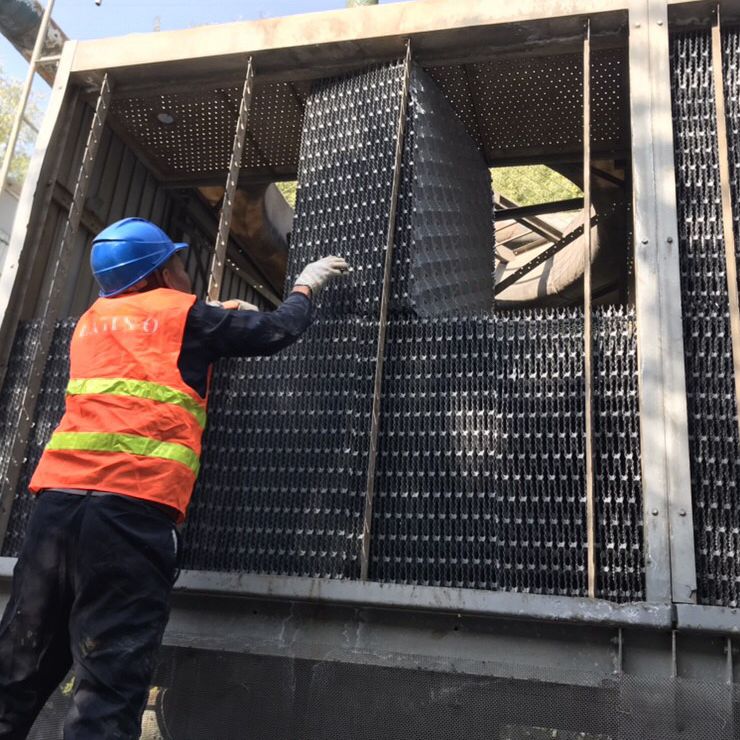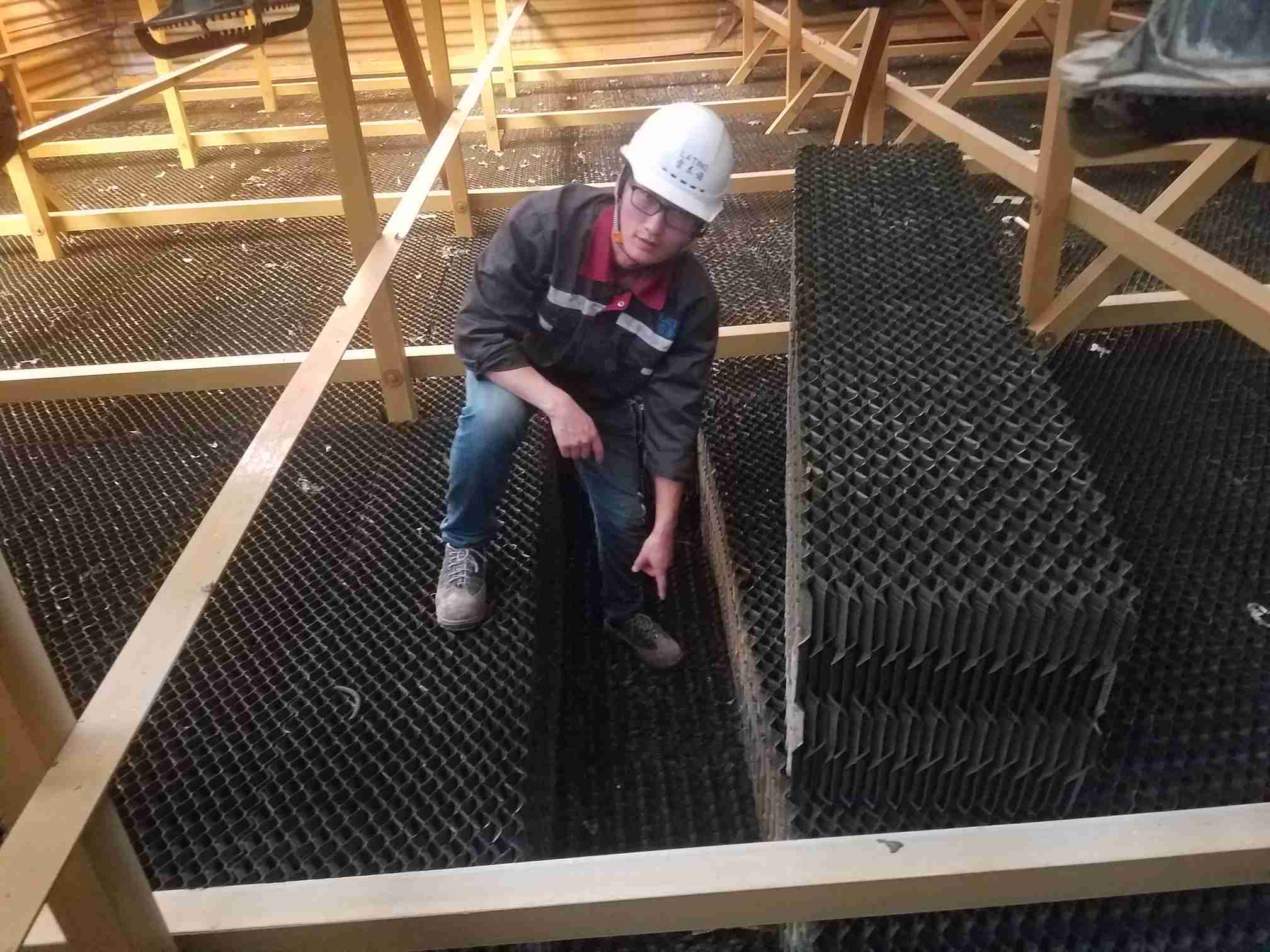
Benefits of regular replacement and cleaning of cooling tower fillers
2022-06-24 11:53Benefits of Regularly Replacing and Cleaning Cooling Tower Fill
The cooling tower packing should be replaced irregularly after 4 years of use to ensure the normal working efficiency of the cooling tower. The aging phenomenon has existed for a long time, and some of the packing has fallen off, resulting in a decrease in the heat exchange capacity of the cooling tower. It affects the operation efficiency of the refrigeration unit and consumes a lot of energy.

At the same time, the broken cooling tower packing enters the copper tube of the condenser of the unit with the operation of the cooling water pump, and the new cooling water treatment agent currently used by our department has a strong function of peeling off rust, which leads to the copper tube of the condenser of the unit. There will be blockages. If the water distribution is found to be uneven during the operation of the cooling tower, try to eliminate the cause in time, which is generally caused by the blockage of the water distribution pipe and the falling off of the nozzle.
The dirt accumulated in the cooling pool and the cooling tower packing should be removed in time, and should be cleaned once every time it is stopped. Shock chlorination should be performed when algal growth is found in circulating water.

After the cooling tower in the system is selected according to the cooling load in summer and the wet bulb temperature calculated outdoors in summer, its cooling capacity in the cooling tower cooling mode should also be checked. The heat exchanger in the indirect cooling system should be a plate heat exchanger. Compared with the traditional shell and tube heat exchanger, the plate heat exchanger has a high efficiency heat exchange capacity. Considering that the cooling width of the cooling tower (the difference between the cooling tower outlet water temperature and the outdoor wet bulb temperature) decreases with the size of the cooling fill at a specific outdoor wet bulb temperature and building load.
Therefore, for multiple sets of cooling tower systems, the method of series cooling towers can be used to increase the cooling effect, increase the outdoor conversion temperature of the cooling tower cooling mode, and thus increase the cooling hours.
As far as the management of circulating water equipment is concerned, no matter in terms of the number of equipment, maintenance workload, power consumption, etc., cooling tower fans occupy a large proportion. The sprinkler packing of the cross-flow cooling tower should have a shrinking inclination to the vertical center axis of the tower from the top to the bottom. The cross-flow cooling tower should be equipped with measures to prevent short-circuit circulation of air from the bottom of the fill to the water surface. After the cooling tower filler in the system is selected according to the cooling load in summer and the wet bulb temperature calculated outdoors in summer, its cooling capacity in the cooling tower cooling mode should also be checked. The chilled water pump in the cooling water loop should be bypassed.

In the cooling tower cooling mode, the chilled water pump is turned off, and the cooling water bypasses the chilled water pump. At this time, the circulating water power is provided by the cooling water pump. Therefore, in the system design, it is necessary to consider the conversion of special cooling pumps.
Finally, let's talk about the matters needing attention when replacing the cooling tower packing.
(1) The waveform between the single chip and the single chip must be in the form of oblique staggered, so as to have good thermal resistance;
(2) The cuboid packing assembly unit is most suitable for matching with the square tower, and a gap will be formed with the circumference of the circular cooling tower, which needs to be filled with different quantities of single-piece packing according to the size of the gap;
(3) Once the packing is blocked, it is not easy to clean up. When the blockage is serious, it needs to be replaced as a whole, which will increase the cost.
